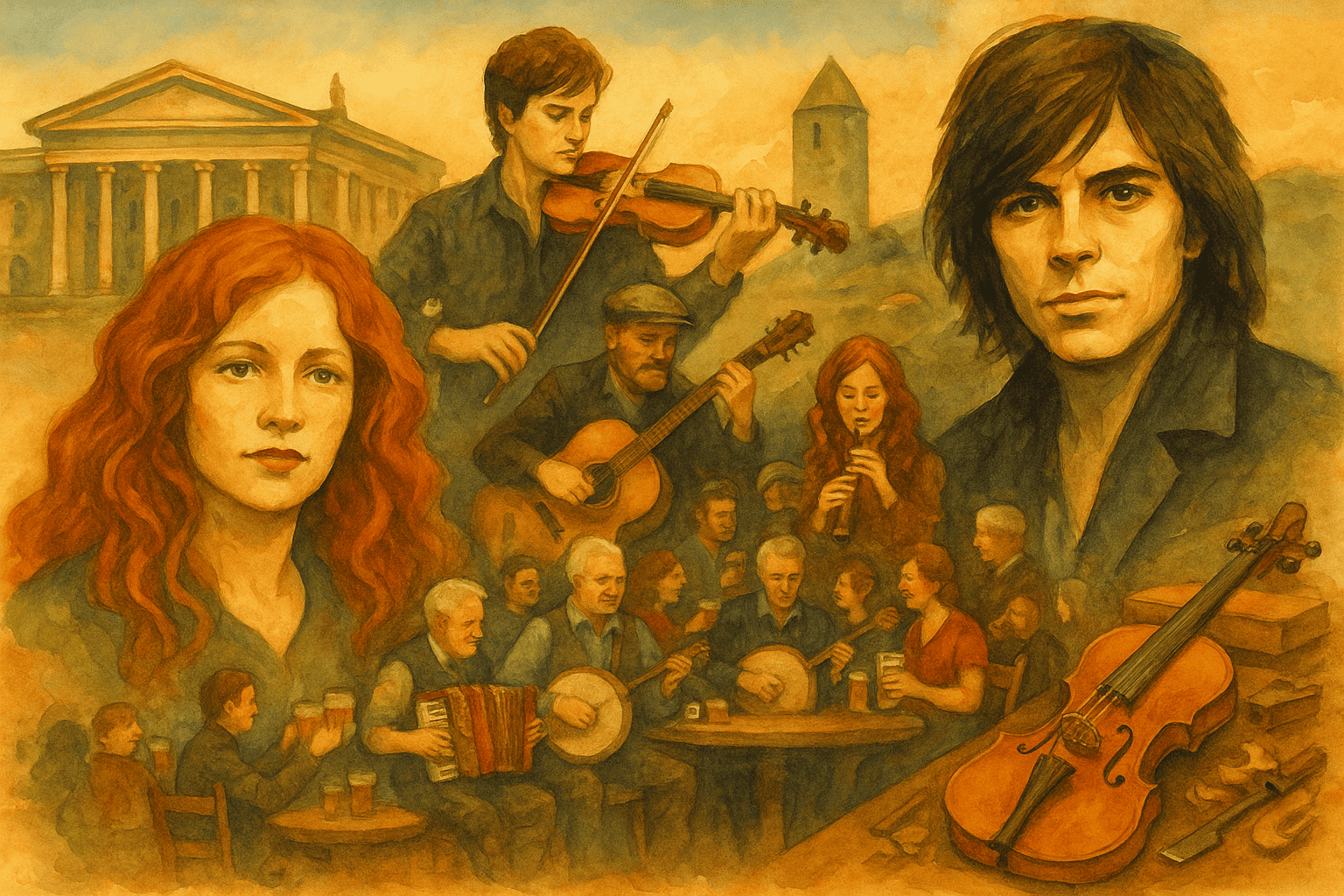
Voices that Shaped History
In Dublin, the raw energy of Imelda May embodies the soul of the Liberties, a working-class neighborhood where every street breathes character and rebellion. In Limerick, the unforgettable voice of Dolores O’Riordan, lead singer of The Cranberries, still lingers as a familiar and intimate echo despite her global fame.
Traveling further back, we find the rock imprint that cemented Ireland’s reputation. Thin Lizzy is hailed as one of the most influential hard rock bands of their era, while Cork-born guitar genius Rory Gallagher dazzled audiences with his explosive playing — so much so that he was once considered to join the Rolling Stones.
The Magic of Traditional Sessions
Yet the beating heart of Ireland remains its traditional music. Picture it: a cold evening, wooden pub doors swinging open, warmth and laughter spilling out, glasses clinking — and at the center, a circle of musicians weaving reels and ballads on the fly.
Songs like The Irish Rover, Raglan Road, or Whiskey in the Jar are more than melodies: they are fragments of history, vessels of shared emotion, tales of joy and sorrow. Depending on the region, the same tune might carry a different shade, a distinct accent — like a musical dialect expressing local identity.
Traditional Irish music is no museum piece; it is living, social, and open to all. As Dr. Sandra Joyce, former director of the Irish World Academy of Music and Dance, noted:
“Traditional music is social, communicative, and varied. Moreover, it is accessible to everyone.”
A Culture Facing Forward
Even today, Ireland keeps reinventing its musical heritage. Young choirs create “virtual choruses” to perform Dreams by The Cranberries. Festivals from Belfast to Cork blend folk traditions with contemporary sounds. Skilled artisans continue crafting fiddles, flutes, and bodhráns, preserving the bridge between past and present.
In Ireland, music is not just an art form; it is a social bond, a living memory, and a way of dreaming together. Or as Bono famously put it:
“Music can change the world because it can change people.”
And perhaps that is why, whether you are Irish or simply a visitor, you eventually find yourself tapping your foot, raising your glass, and letting yourself be carried away by the rhythm of the island.
